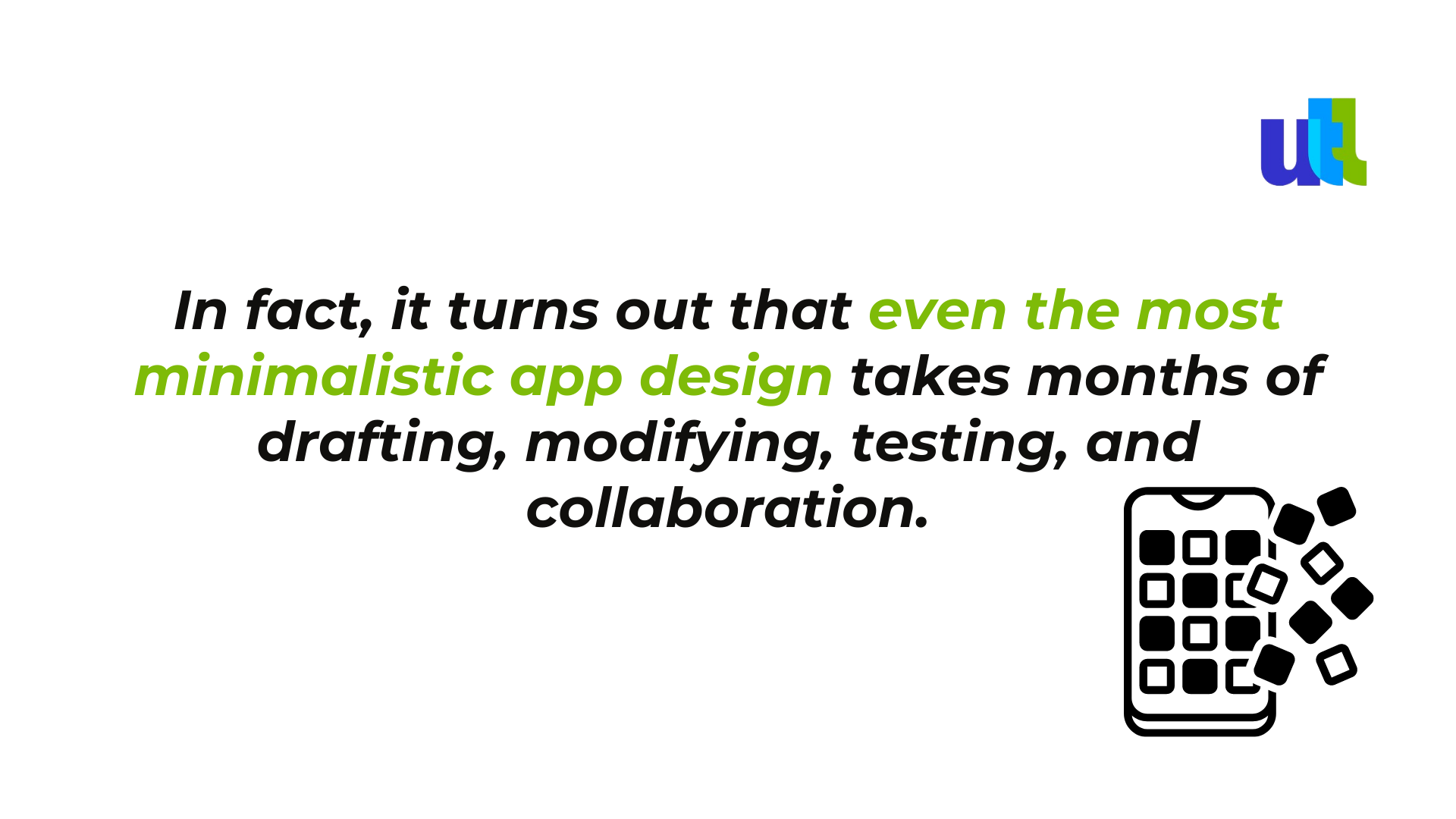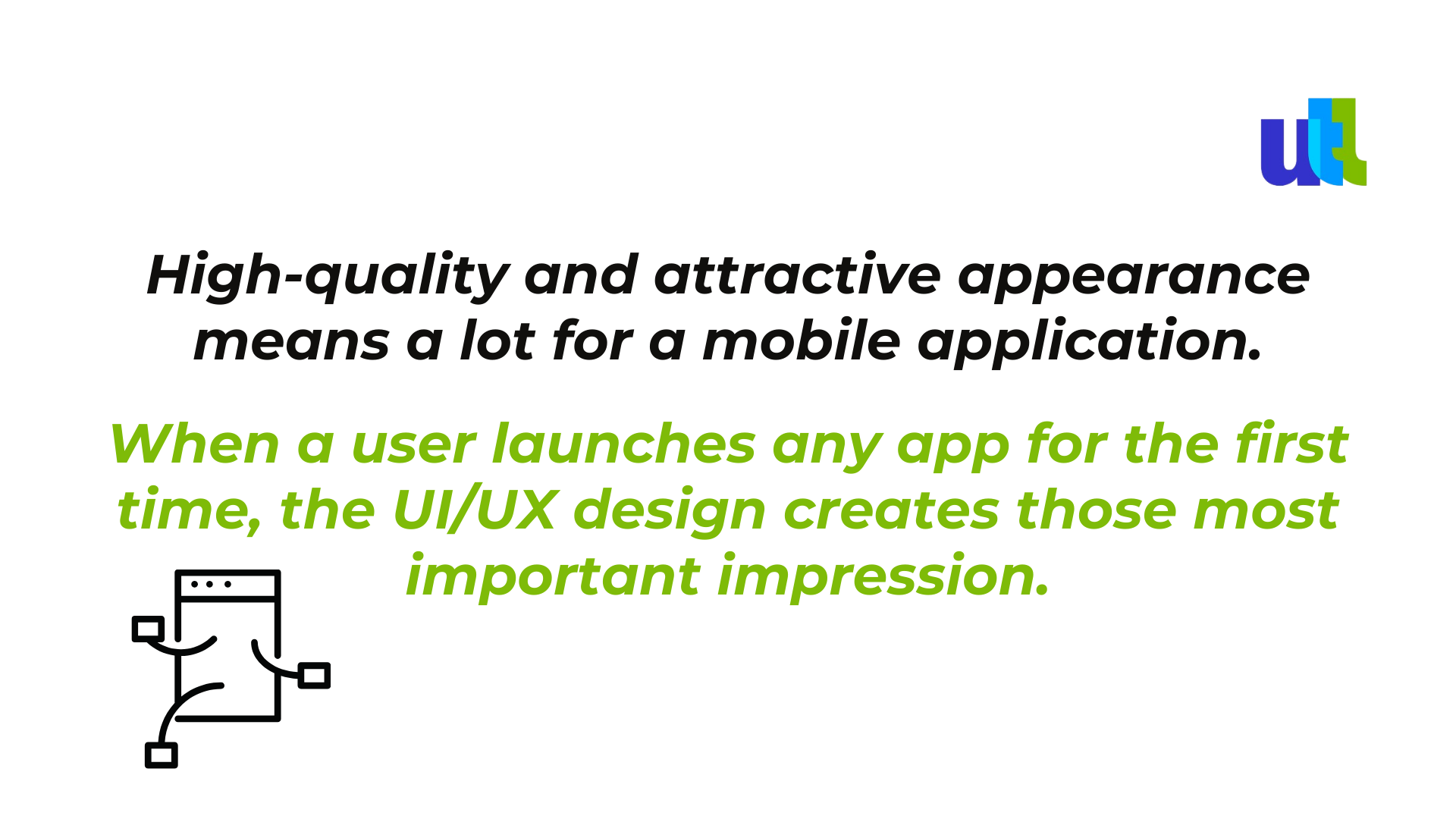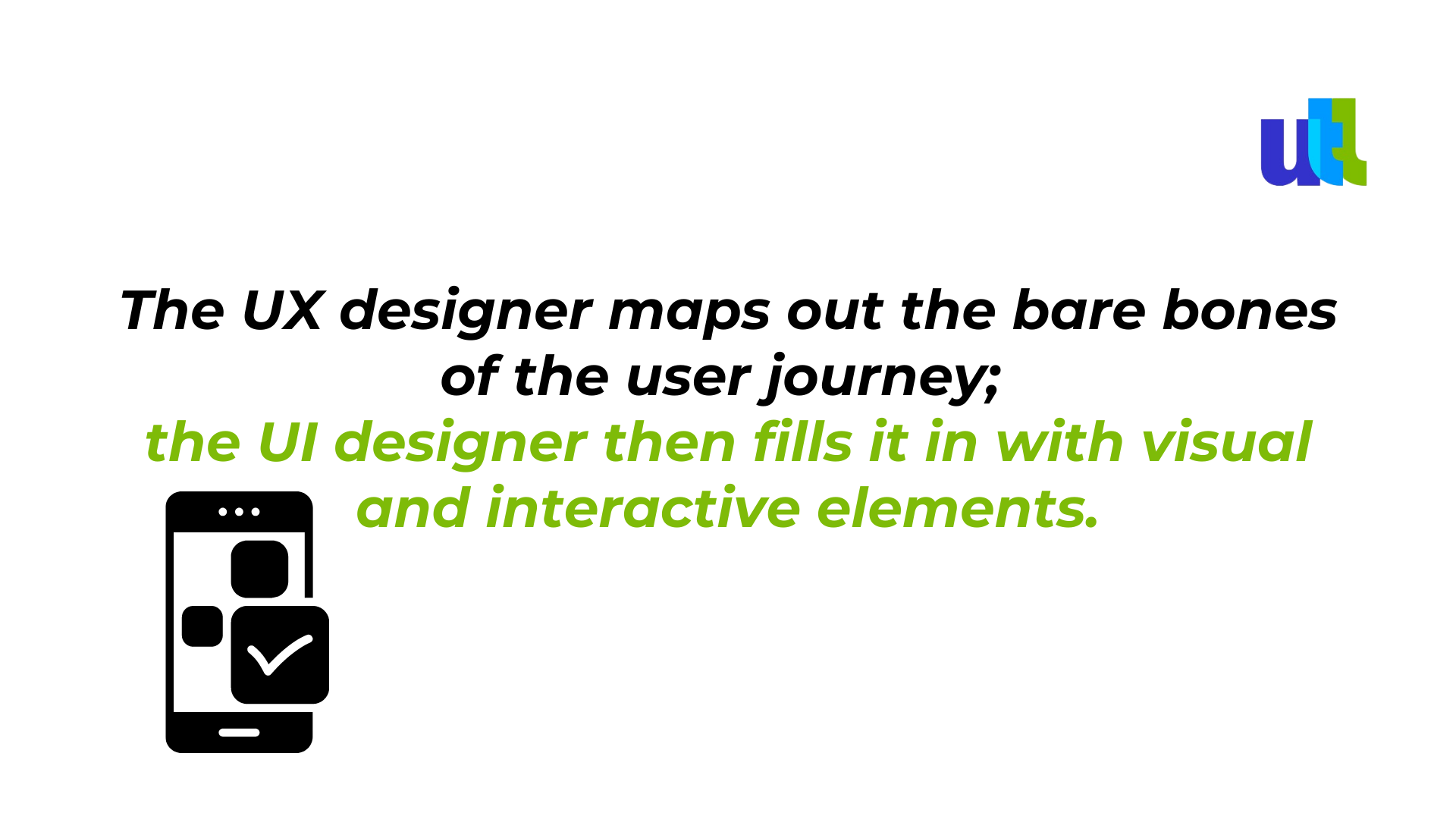There’s no substitute for great design. Look at your favorite visually pleasing apps. Nowadays, most of those will look easy and minimalistic. You might think these are just a few simple components and icons put together - how difficult could it be?

Did you know the average person in the US spends approximately 5 hours using their smart devices? Whether it’s messaging, posting photos, doing groceries, or gaming—in the digital age we live in people are constantly using apps.
With massive popularity comes massive competition. And while competition is a good thing (for it makes everything a little bit better), creating an app that can beat the competition is becoming more and more challenging.
But no one said impossible.
Beautiful interfaces, striking simplicity, and easy navigation are the 3 most prominent traits of a great app. These make people tell their friends about your app, understand its purpose, and keep coming back to it.
But how do you create a great app design?

3 Key stages to a great App Design
1. Business analysis
First. While developing any mobile app development project, you need to define the target platform (iOS, Android, or both), the development method, and all the functional requirements.
When a user installs an app, they expect it to be intuitive (based on prior experience). So, if an app goes against most of the OS-specific development rules, users are likely to delete it.
Does it sound too techy for a start? Maybe yes, but the truth is that all the further steps heavily depend on the decisions you make at this point. We recommend completing this step together with a professional business analyst specializing in mobile design.
To decide on the platform, you will need to analyze your target audience and ask about their platform preferences, geography, and income. For example, for an average US user, just an iOS version will work fine. But if you want your app to go global, an Android version will be a must in most cases.
Once done, consider the development approach, by choosing one of the following options:
- Native development – UX and UI design are in line with the platform’s original guidelines. This development option brings high implementation costs but also guarantees high user satisfaction.
- Hybrid development – UX and UI design is the same on all platforms and, thus, may seem unnatural at first. One huge benefit is that the implementation costs are almost 2x lower than with native development.
- Cross-platform development – UX and UI design have a near-native look and experience across all platforms while requiring about 70% of the native development budget.
Deciding on the functional requirements is the core objective of business analysis since it will help build a detailed concept and describe all the technical tasks step-by-step.
2. UX design basics
When you’ve defined the functional requirements of your future app, you can proceed with the actual design action - user experience design. Its development is usually performed by a UX using the data provided by a business analyst.
UX designers create fictional profiles of your mobile app’s future users – personas, and their interaction patterns with the application-user scenarios. A good mobile app design usually requires 5-7 personas with at least 2 different user scenarios per each.
Both of them allow a UX designer to understand what users will want to achieve while using your app and create the appropriate interaction flows between the user and the mobile app.
Then, around 40 mockups of UX wireframes go through thorough multi-round UX testing. Its goal is to get early feedback and eliminate UX issues while they are still easy and cheap to fix.
3. UI design prototypes
UI is an integral aspect of user experience (UX) that consists of two major parts: visual design (conveys the look and feel of a product) and interaction design (the functional and logical organization of elements). Its main goal is to create a user interface that makes it easy, efficient, and enjoyable for users to interact with a product.

UI wireframes (usually in the form of monochromatic schemes) – are the basis for the work of user interface designers. They transform the lo-fi wireframes into a colorful, hi-fi digital prototype by combining your company’s brand look, platform-specific guidelines, web application functionality pack (if present), and the latest mobile design trends.
Once the prototype is finished, it’s time to get the first review. Even if some major fixes or additions might be expensive, they will still be at least 2 times cheaper at this stage than after the launch.
Only after the final UI prototypes have been approved, the design can be considered as complete. At this point, you can safely proceed to development.
Wrapping Up
The app-building process is not a piece of cake. Do not trust those clickbait postings like “Build an application in 5 Minutes!”. It might sound appealing, but let’s be honest: such development is simply not serious enough. Apps are such a dominant aspect of today’s business world: you might want to add value to your brand, and not ruin it by launching a low-quality app product.
App design is a pull of activities that involve both user interface (UI) and user experience (UX), where app designers oversee making the app look attractive, while developers make it operate in a proper way. The presence of the developers in the design process will help to match the visual preferences with the functionality and the technical component — and, thus, create a quality product.
But as challenging as designing is, that’s just one part of the process. There’s also app coding, testing, deployment, and marketing that you need to think through.
If you feel like some of the aspects of app design and development cause uncertainties and hold you back from launching your mobile app, don’t hesitate to reach out to expert teams.
Our leading app development company in Utah is there to assist you along the way.
For free consultation about successful app design click here.
----------------------------------------------------------------------------------------------
View the full presentation:
WRITTEN BY
Sofia Kutko
2023-03-28














































































































































































